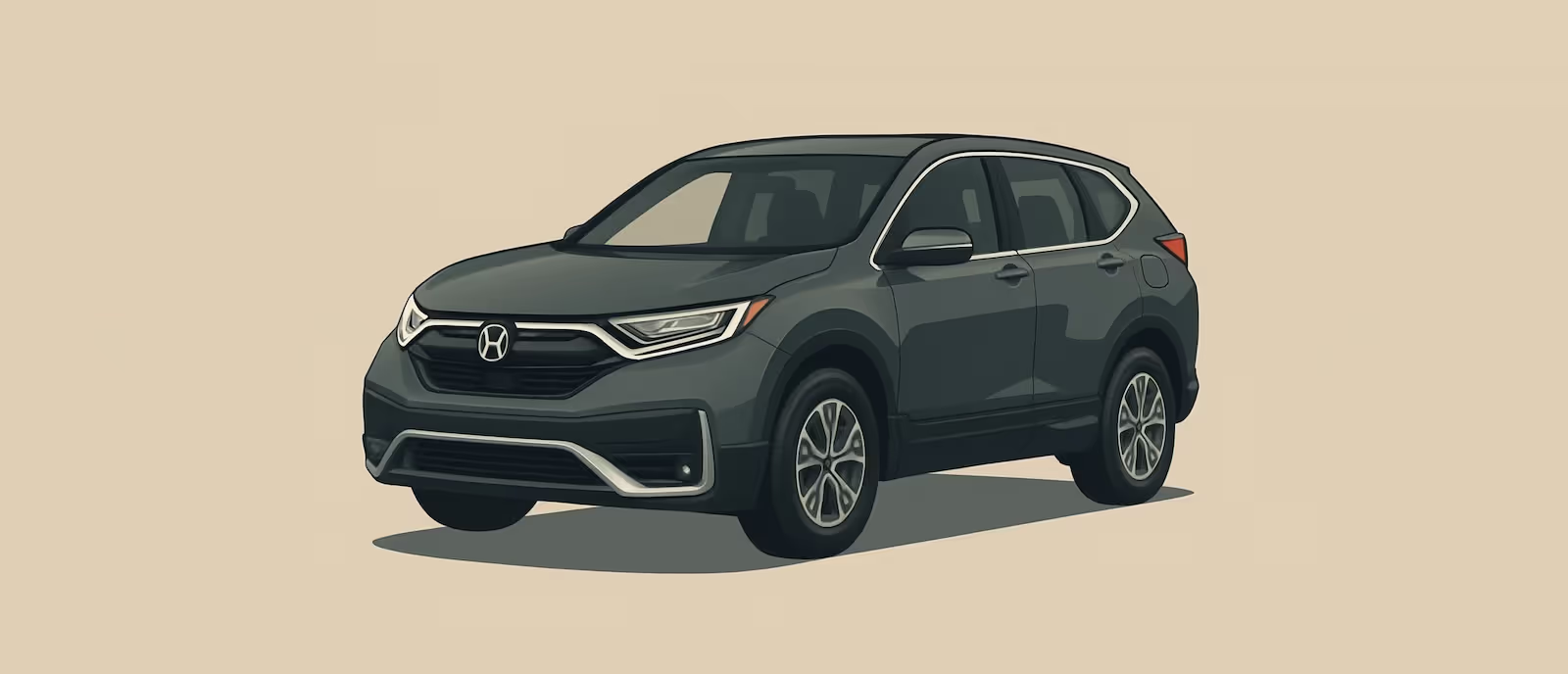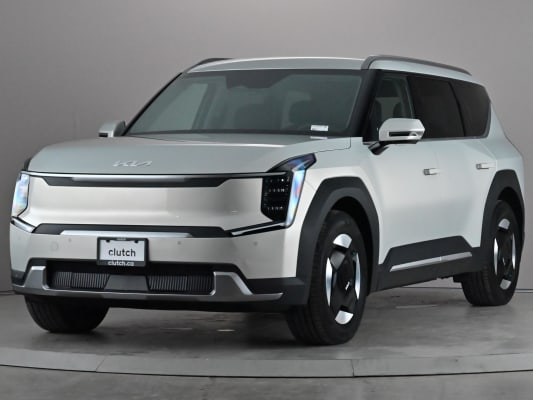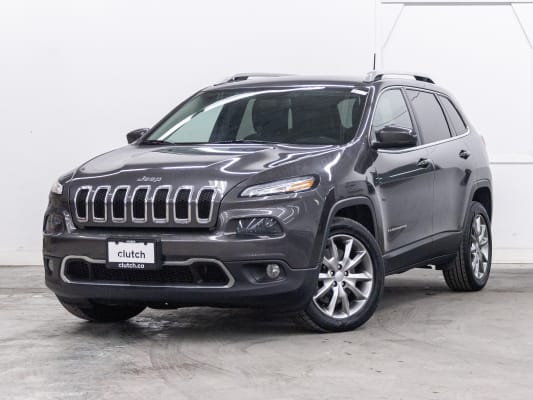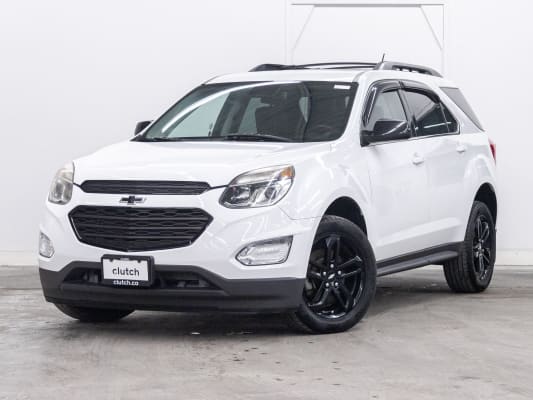The Honda CR-V has long been a favourite among Canadian drivers for good reason. It blends the comfort and fuel efficiency of a smaller car with the added space, versatility, and all-wheel drive capability of an SUV. Whether you are commuting through busy city streets or heading up to the cottage for the weekend, the CR-V is built to handle Canadian roads and weather with ease.
Over the years, Honda has built the CR-V into one of the most trusted compact SUVs on the market. Most model years are well-known for their long-lasting reliability and low ownership costs. However, like any vehicle, there are a handful of years that come with specific issues buyers should be aware of. Some CR-Vs have been prone to things like air conditioning failures, increased oil consumption, or early teething problems with newer engine and transmission designs.
If you are shopping for a used CR-V in Canada, it pays to know exactly which years had more frequent problems and what to watch for. In this guide, we will break down the few CR-V model years that stand out for the wrong reasons, based on owner reports, recall history, and expert data. That way, you can make a confident decision and enjoy a CR-V that delivers the worry-free ownership these SUVs are famous for.
Quick Summary: Honda CR-V Years to Avoid
The Honda CR-V is generally known for its strong reliability, but certain model years have recurring issues that can lead to costly repairs. If you are shopping for a used CR-V in Canada, keep an eye out for the following years:
Not every CR-V from these years is guaranteed to have problems, but they are far more likely to develop these issues compared to other model years. In the sections below, we will break down what makes each of these years riskier and how to protect yourself if you still choose to buy one.
2002–2006 Honda CR-V: AC Compressors and Differential Noise
The second-generation Honda CR-V, sold in Canada from 2002 to 2006, brought a larger cabin, improved ride comfort, and an available all-wheel drive system that made it a hit among Canadian families and outdoor enthusiasts. For the most part, these are well-built SUVs that can last well over 300,000 kilometres with proper care. However, there are two known issues from this era that buyers should keep in mind.
Air conditioning compressor failures:
One of the most commonly reported problems in these years is the air conditioning compressor seizing or failing internally. When it happens, the compressor can send metal debris through the entire AC system, contaminating lines, the condenser, and other components. This means fixing the problem usually involves replacing almost the entire system, which can quickly add up to several thousand dollars. While not every CR-V from this range will face this problem, it is common enough that it’s worth asking sellers if the AC system has ever been repaired or replaced.
Rear differential servicing on AWD models:
For CR-Vs equipped with all-wheel drive, the rear differential requires regular fluid changes. If this maintenance was skipped, the differential can develop a grinding or groaning noise during tight turns, especially noticeable in parking lots. Left unchecked, it could lead to expensive repairs or even the need for a full differential replacement.
What to watch for:
- Run the AC on full blast during your test drive to ensure it cools properly and listen for odd noises from the compressor.
- If buying an AWD model, ask for records showing differential fluid changes roughly every 50,000 km. During low-speed turns, pay attention to any shuddering or moaning from the rear.
Most 2002–2006 CR-Vs are otherwise solid choices that deliver great value, provided these issues have been addressed. A little extra homework up front can help you avoid big repair bills later.
2010–2011 Honda CR-V: Excessive Oil Consumption
By the time the 2010 and 2011 models rolled out, the Honda CR-V was firmly established as one of Canada’s best-selling SUVs. These later third-generation models offered a smooth ride, solid fuel economy, and the same dependable all-wheel drive that made earlier CR-Vs so popular. However, owners and mechanics have noted one particular issue that makes these two model years worth a closer look.
Oil consumption concerns:
Some 2010 and 2011 CR-Vs equipped with the 2.4-litre four-cylinder engine developed a habit of burning oil faster than normal. The problem was tied to piston ring design, which allowed small amounts of oil to slip into the combustion chamber and burn off. Many owners reported needing to top up oil between regular oil changes to prevent levels from dropping too low.
While these engines often still ran reliably, letting oil run low could cause long-term internal wear or even lead to engine damage. Honda did issue service bulletins and offered repairs in some cases, but typically only after the oil usage met a specific threshold.
What to watch for:
- Check the oil level and look for any fresh oil stains under the vehicle or on the engine block.
- Ask the seller how often they needed to add oil between changes. Consistent top-ups are a red flag if not carefully managed.
- Look for service records that show any piston ring-related repairs or regular oil monitoring.
Many 2010–2011 CR-Vs continue to deliver long life and dependable performance, especially if owners stay on top of oil levels. Just be prepared to keep a close eye on oil consumption if you buy one, and negotiate the price accordingly.
2012–2013 Honda CR-V: Vibration at Idle
When Honda launched the redesigned fourth-generation CR-V for the 2012 model year, it brought a more refined cabin, improved fuel economy, and updated tech features that made it even more appealing to Canadian buyers. While generally well-regarded, the early years of this generation did come with one annoyance that many owners noticed: vibration at idle.
Idle vibration complaints:
On some 2012 and 2013 CR-Vs, drivers reported a noticeable vibration felt through the steering wheel, seats, and even the floor when the vehicle was stopped in gear, such as at a red light. This was most apparent when the air conditioning compressor kicked on, putting additional load on the engine. The issue was tied to a combination of engine mount design and how the engine’s idle was calibrated under load.
Honda issued software updates and, in some cases, replaced engine mounts to help reduce the vibration, but some owners felt improvements were minor. By 2014, Honda had refined the design and programming, so this issue became less common.
What to watch for:
- During your test drive, let the vehicle sit in gear at idle with the AC on and pay attention to any noticeable shaking or vibration.
- Ask if the previous owner had any software updates or engine mount replacements done under warranty.
- Minor vibration is not unusual for four-cylinder engines, but excessive shaking can be uncomfortable over time.
Many 2012–2013 CR-Vs perform flawlessly otherwise, but if you are sensitive to vibrations or spend a lot of time idling in traffic, it is worth checking for this issue before you buy.
2015–2016 Honda CR-V: CVT Shudder and Hesitation
In 2015, Honda gave the CR-V a mid-generation update that included refreshed styling and, more significantly, the introduction of a new continuously variable transmission (CVT). This change aimed to improve fuel efficiency and provide smoother acceleration. While most owners appreciated the mileage gains, the first couple of years with the CVT brought some early growing pains.
Reports of shudder and sluggish response:
Some 2015 and 2016 CR-V owners noticed that the new transmission felt hesitant when accelerating from a stop or when merging onto highways. In other cases, the CR-V would develop a light shudder or vibration under steady acceleration, particularly around 40 to 60 km/h. While these symptoms rarely led to outright transmission failure, they did affect driving confidence and comfort.
Honda issued software updates to adjust how the CVT behaved, which helped reduce complaints in many cases. By 2017, the programming and internal components were refined further, making these issues far less common.
What to watch for:
- During your test drive, pay close attention to how the CR-V accelerates from a stop and during light throttle. Any hesitation or shuddering could point to an issue.
- Ask if the vehicle received any CVT software updates or related service under warranty.
- Slight CVT “rubber band” feel is normal, but harsh vibration or noticeable lag is not.
For many buyers, the 2015 and 2016 CR-V still offer excellent value and reliability, especially when well maintained. Just make sure to drive a few examples so you can compare how each one feels.
2017–2018 Honda CR-V: Turbo Oil Dilution in Cold Climates
In 2017, Honda launched an all-new CR-V with a more upscale interior, improved ride quality, and a new 1.5-litre turbocharged engine that delivered excellent fuel economy without sacrificing power. This generation quickly became a top pick for Canadian drivers looking for a versatile small SUV. However, the first couple of years with the new turbo engine revealed an issue that is especially relevant in Canada’s colder climate.
Fuel mixing with engine oil (oil dilution):
Some owners of 2017 and 2018 CR-Vs with the 1.5-litre turbo engine found that unburned fuel could slip past the piston rings and mix into the engine oil. This caused the oil level to rise and the oil itself to thin out, reducing its ability to properly lubricate the engine. The problem was more pronounced in cold weather, where short trips prevented the engine from fully warming up and burning off excess fuel. While most vehicles still ran reliably, over time, diluted oil could increase internal wear.
Honda issued software updates and extended warranties in many regions to address owner concerns. By 2019, the issue had been largely resolved thanks to updated engine calibration.
What to watch for:
- Check the oil level on the dipstick and see if it smells strongly of gasoline, which could indicate fuel mixing.
- Ask the seller if any software updates were completed under warranty to address this issue.
- If you plan on frequent short trips in winter, be prepared to monitor oil levels and change oil slightly more often.
Most 2017–2018 CR-Vs continue to deliver excellent long-term reliability, especially if oil changes were done on time and the software updates were performed. As always, maintenance records and a pre-purchase inspection are your best tools for buying with confidence.
Common Honda CR-V Problems to Watch For
Even with its reputation for reliability, the Honda CR-V is not entirely problem-free. Certain issues have come up more frequently across multiple model years. Knowing what to watch for can help you spot small problems before they become major repairs.
- Air conditioning compressor failures (2002–2006):
These can send debris throughout the entire AC system, leading to costly full-system replacements. - Rear differential noise (2002–2006 AWD):
Lack of differential fluid changes often causes groaning or grinding in tight turns, which means future repairs. - Excessive oil consumption (2010–2011):
The 2.4-litre engine in these years may burn oil faster than normal, requiring frequent top-ups to avoid internal wear. - Vibration at idle (2012–2013):
Related to engine mounts and AC loading, this may be noticeable through the steering wheel and seats when stopped. - CVT hesitation or shudder (2015–2016):
Early years of the CVT brought reports of sluggish or rubbery acceleration, often improved with software updates. - Turbo oil dilution (2017–2018):
In cold climates like Canada, fuel can mix with engine oil on the 1.5L turbo, thinning it out and reducing protection.
Not every CR-V will have these problems, especially if previous owners stayed on top of maintenance and completed recommended updates. Still, being aware of these patterns can help you spot issues during your test drive or inspection.
Buying Checklist for a Used Honda CR-V in Canada
If you are shopping for a used CR-V, taking a few extra steps before you buy can save you thousands down the road. Here’s what to check:
- Review maintenance records:
Look for proof of regular oil changes, differential fluid replacements on AWD models, and any service campaigns for CVT or turbo software updates. A well-documented history is the best indicator of long life. - Inspect the AC system:
Run the air conditioning at full blast and listen for clicking or rattling noises. Weak cooling or odd sounds could signal an AC compressor on its way out. - Test for differential noise:
On AWD models, make slow, tight turns in a parking lot and listen for groaning or binding from the rear. This can indicate neglected differential fluid changes. - Check for idle vibration:
With the AC on and the CR-V in drive at a complete stop, pay attention to any shaking through the seat or steering wheel. Minor vibration is normal, but strong shaking can be uncomfortable over time. - Evaluate CVT performance:
If looking at a 2015–2016 model, see how the transmission responds to gradual and quick acceleration. Hesitation or a noticeable shudder may indicate an update was missed. - Watch for turbo oil dilution signs:
For 2017–2018 CR-Vs, pull the dipstick and see if the oil smells strongly of gasoline. Ask if software updates were performed to help minimize fuel mixing. - Run a CARFAX or similar report:
This will show any accidents, insurance claims, or open recalls. At Clutch, every used CR-V comes with a free CARFAX report for peace of mind.
Spending a little extra time on these checks means you can drive away in a CR-V that is ready to handle Canadian winters and summer road trips without surprise costs.

The Bottom Line on CR-V Reliability
The Honda CR-V has earned its place as one of Canada’s best-selling small SUVs by offering comfort, versatility, and long-lasting dependability. While most CR-Vs live up to that reputation, a few specific model years have well-documented issues that are worth considering before you buy. From early AC failures to later CVT concerns and the first years of the turbo engine, knowing what to watch for can help you avoid surprise repair bills down the road.
The good news is that many of these CR-Vs continue to deliver excellent value and reliability, especially if previous owners stayed on top of maintenance and completed recommended updates. By being selective about the model year and doing your homework on service history, you can enjoy all the benefits of a CR-V without the typical headaches.
At Clutch, every used Honda CR-V undergoes a 210-point inspection and comes with a free CARFAX report so you know exactly what you’re buying. Plus, with a 10-day money-back guarantee, you can shop for your next SUV with total confidence.
Start browsing our wide selection of quality used Honda CR-Vs today and find the perfect fit for your Canadian adventures.
{{widget-1}}
FAQs About Honda CR-V Years to Avoid
What Honda CR-V years should I avoid?
The main years to approach carefully are 2002–2006 for AC and differential issues, 2010–2011 for oil consumption, 2012–2013 for vibration at idle, 2015–2016 for early CVT quirks, and 2017–2018 for turbo oil dilution. Many of these vehicles are still solid if well maintained, so service records are key.
Is the 2017 Honda CR-V reliable in Canada?
The 2017 CR-V is generally dependable, but the first years of the 1.5-litre turbo engine had some oil dilution concerns, especially in cold climates. Look for vehicles with software updates and documented oil changes to reduce risks.
Are Honda CR-Vs good in the snow?
Yes. The CR-V’s Real Time AWD system is designed for slippery conditions and pairs well with a good set of winter tires, making it a popular choice for Canadian winters.
How long do Honda CR-Vs usually last?
With regular maintenance, many CR-Vs easily reach 300,000 kilometres or more. Staying on top of oil changes, fluid replacements, and any service bulletins will help it go the distance.
How can I tell if a CR-V has the oil dilution issue?
For 2017–2018 models with the 1.5L turbo, check the oil level and see if it smells like gasoline. Ask for records showing software updates and shorter oil change intervals, which help manage the issue.






_Thumbnail.avif)





































































































